Welcome to Bhubaneswar, the capital city of Odisha, where ancient traditions and modernity seamlessly coexist. Known as a “Temple City,” Bhubaneswar is a treasure trove of Kalinga temple architecture. In this blog post, we’ll take you on a journey through top 10 must-visit temples of Bhubaneswar.
Bhubaneswar’s rich history and cultural heritage are beautifully encapsulated in its numerous temples, which are an ode to the city’s deep-rooted devotion and architectural finesse. From towering spires to intricate carvings, these temples offer a glimpse into the profound spirituality that has thrived in this region for centuries.
As you explore the city, you’ll be captivated by the grandeur of temples like Lingaraj, Mukteshwar, and Parasurameswara, which stand as excellent examples of Kalinga architecture. Their splendid architecture, dedicated rituals, and vibrant festivals provide an enchanting experience for all visitors.
Bhubaneswar isn’t just a place of worship; it’s a destination for all kinds of visitors including pilgrims, tourists and scholars . So, join us as we embark on a journey to discover the soul of this ancient city through its temples and unravel the mystique that makes Bhubaneswar a must-visit destination for both spiritual seekers and architecture enthusiasts.

Post Contents
The Kalinga Temple Architecture
Kalinga Temple Architecture, also known as Odisha Temple Architecture, is a style of temple design indigenous to Odisha, formerly known as Kalinga. While broadly it is Nagara style of temple architecture, It encompasses three distinct temple types, each with its unique features: Rekha Deula, Pidha Deula, and Khakara Deula. Deula in Odia means temple.
The Rekha Deula is a towering, pyramidal temple with a curvilinear shikhara (tower) that tapers as it rises, culminating in a finial. These temples are renowned for their intricate stone carvings, often depicting stories from Hindu mythology. The iconic Lingaraja Temple in Bhubaneswar is a prime example of a Rekha Deula, with its majestic 55-meter high tower.
The Pidha Deula, on the other hand, features a stepped pyramidal structure with horizontal platforms or pidhas. This design gives the temple a terraced appearance.The Konark Sun Temple, a UNESCO World Heritage Site is a splendid illustration of a Pidha Deula.
Lastly, the Khakara Deula combines elements of both the Rekha Deula and Pidha Deula styles. It exhibits a rectangular sanctum topped by a curvilinear shikhara with a pyramidal roof. A closer look of the Khakara style tells you how its design is influenced by the Dravidian temple style. The Baitala Temple of Bhubaneswar follows this style of Kalinga Temple Architecture.
Kalinga Temple Architecture is distinguished by its exceptional artwork, geometric precision, and a harmonious fusion of various architectural influences. These temples not only serve as places of worship but also as architectural marvels that reflect the cultural and artistic heritage of Odisha, leaving visitors and devotees in awe of their timeless beauty and significance.
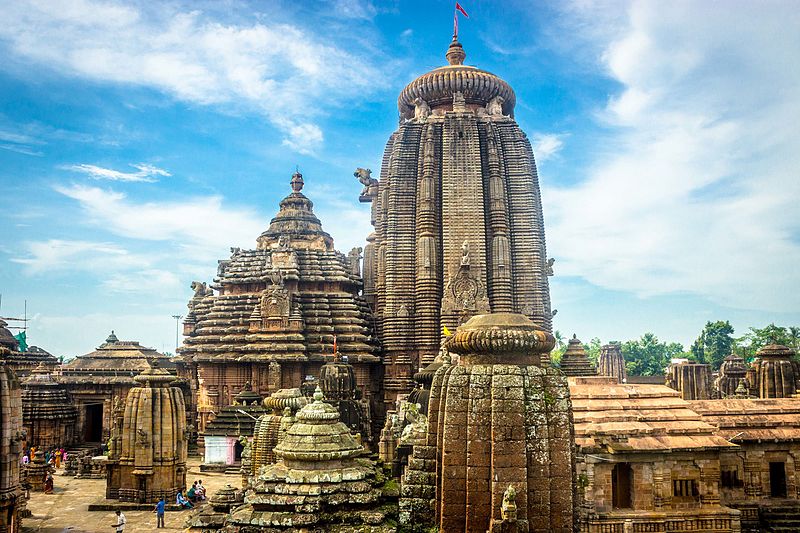
Related Article: Visiting Bhubaneswar? The Khandagiri and Udayagiri Caves are a Must-See
1.Lingaraja Temple
The Lingaraja Temple, dating back to the 11th century, is the largest temple in Bhubaneswar and a prime example of the Deula style of architecture. This magnificent temple is dedicated to Lord Shiva and showcases the grandeur of ancient Kalinga temple architecture. With its towering structure, intricate carvings, and captivating sculptures, the Lingaraja Temple is a visual delight for visitors.
The temple complex consists of four distinct components: the Vimana (sanctum), Jagamohana (assembly hall), Natamandapa (festival hall), and Bhogamandapa (hall of offerings). Each has a tower and is arranged in the increasing order of their height. The sanctum, with its impressive height at 55 meters, is the focal point of the temple. Shivaratri is the major festival celebrated in the temple when over a lakh devotees visit the temple.
The temple was possibly founded by Lalatendu Keshari, who reigned from 615 to 657 CE. The Jagamohana, Vimana, and temple tower were built in the 11th century, while the Bhogamandapa was completed in the 12th century. The Natamandapa was constructed between 1099 and 1104 CE.Unlike most other temples in Bhubaneswar, this temple is active in puja practices. The temple complex boasts 108 other shrines and is surrounded by a huge compound wall.
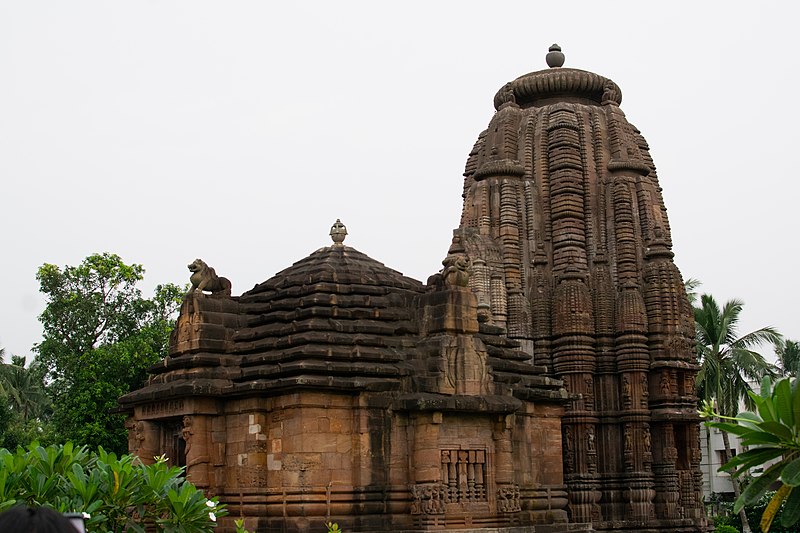
2.Rajarani Temple
The Raja Rani Temple is a popular 11th-century Hindu temple in Bhubaneswar that stands out for its unique architectural features. Although not as tall as other temples in Bhubaneswar, the Rajarani Temple is renowned for its intricate carvings and decorative motifs. This temple is not dedicated to any deity and is built as a celebration of love between a ruler and his queen. The sandstone structure of the temple is adorned with elaborate carvings depicting scenes from the marriage of Lord Shiva and Goddess Parvati.
The temple was previously known as Indreswara. The erotic carvings of women and couples in the temple have earned it the nickname “love temple” among the locals. Rajarani Temple is built on a raised platform in the pancharatha architecture with two structures: a central shrine called the vimana (sanctum) with a bada (curvilinear spire) above its roof rising to a height of 18 m (59 ft) and a viewing hall called jagamohana with a pyramidal roof. The temple was built of dull red and yellow sandstone known as “Rajarani” in the area. As there are no images inside the sanctum, it is not affiliated with a particular sect of Hinduism, but is rather categorized as Saivite based on the niches.
You can enjoy the annual Rajarani Music Festival organized at the temple premise in January , which celebrates the rich cultural heritage of the region.

Also Read: Jageshwar Dham: The Sacred Abode of Lord Shiva in Kumaon
3.Brahmeshwar Temple
The Brahmeshwar Temple, constructed in the 11th century, is a remarkable temple dedicated to Lord Shiva. What sets this temple apart is its innovative use of iron beams in its construction, making it the first temple in the region to incorporate this structural element. The temple follows the Panchatanaya plan, with a main shrine surrounded by four smaller shrines. The tower of the central shrine rises to a height of 18.96 m.
The carvings on the temple walls depict musicians and dancers, showcasing the evolution of regional architecture. The Brahmeshwar Temple is a testament to the ingenuity and creativity of ancient architects, and it continues to captivate visitors with its unique design and artistic beauty.
Historians date the temple to the late 11th century, based on an inscription brought to Calcutta from Bhubaneswar. According to the inscription, the temple was built by Kolavatidevi, the mother of Somavamsi ruler Udyota Kesari.

4.Parashurameshwara Temple
The Parashurameshwara Temple, believed to be even older than the Lingaraja Temple, dates back to the 7th century and is one of the oldest temples in Odisha. This temple predates the elaborate architectural styles seen in later temples and provides insights into the early stages of temple construction in the region. The vimana, or sanctum, and the curvilinear spire over the top of the Parashurameshvara Temple rise to a height of 12.27 m.It is the first temple to have an additional structure called jagamohana, compared to the earlier temples that had only the vimana.
The temple features three distinct structures and is adorned with carvings of Lord Shiva and the Saptamatrikas, the seven mother deities of Hinduism. The Nagara style of architecture, which predates the more intricate styles seen in later temples, is evident in the Parashurameshwara Temple. It is one of the best maintained Bhubaneswar temples and is managed by ASI as a ticketed monument. A visit to this ancient temple offers a glimpse into the early stages of temple construction in Bhubaneswar.

5. Ananta Vasudeva Temple
The Ananta Vasudeva Temple, built in the 13th century, is dedicated to Lord Krishna and is reminiscent of the Lingaraja Temple in its architectural style. The temple stands as a testament to the assimilation of Vaishnava deities into the predominantly Shaiva culture of the region. The temple dates back to the period of Chandrika Devi, the daughter of Anangabhima Deva III, during the reign of the king Bhanudeva. A commemorative inscription that marked the foundation of the temple can be found in the British Museum’s collection.
What sets this temple apart from others is its three structures, as opposed to the usual two or four found in other temples. The intricate carvings and sculptures, particularly those of Lord Krishna, Balarama, and Subhadra, are a sight to behold. Another distinct feature of the temple is its prasada.
There is a dedicated temple kitchen where lord’s food is cooked only in mud pots and firewood is used. Ingredients are Arua rice, large quantities of vegetables such as red cucumbers, yam, bananas, potatoes, manure, paper, concoctions are all organic vegetables. Poda Pitha, Lord Jagannath’s favorite food is also prepared here. Devotees in large numbers visit the temple for the prasada. You have to order in advance if you want to take it home.
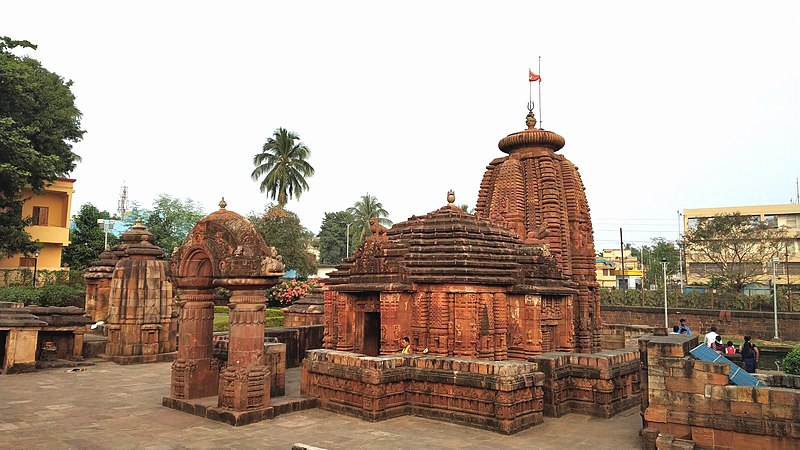
Do Read: Visiting Katarmal Sun Temple in the Kumaon
6.Mukteswar Temple
Built in the 10th century, Mukteshwar Temple in Bhubaneswar distinguishes itself with a distinctive arched entrance gateway, or Torana, setting it apart from other temples. Noteworthy is the influence of Buddhism on its architecture, evident in the Torana’s design. The temple’s upper sculptures also exhibit similarities to Buddhist art. As one ventures beyond the Torana, the Jagamohana and Vimana structures come into view, featuring intricate carvings that add to the temple’s allure.
This amalgamation of architectural styles and cultural influences creates a unique and captivating ambiance at the Mukteshwar Temple, making it a must-visit destination. The temple stands as a testament to the rich historical and cultural tapestry of the region, where diverse influences converge to form a harmonious architectural marvel.
Dedicated to Lord Shiva, the temple dates around 950-975 CE and is a landmark in the study of the evolution of Hindu temples in Odisha. The stylistic development of the Mukteswara marks the culmination of all previous advancements and started a period of experimentation that lasted for an entire century, as witnessed in temples such as the Rajarani Temple and Lingaraj Temple, both located in Bhubaneswar. Apart from tourists and pilgrims, Mukteswar Temple is also visited by large numbers of Historians and research scholars.

7.Chausath Yogini Temple
The Chausath Yogini Temple, located in Hirapur, around 20 km from Bhubaneswar, is a unique temple dedicated to the Yoginis, the demi-goddesses associated with Tantra. This circular temple, devoid of any roof, stands as a testament to the tantric practices prevalent in ancient times. This temple is believed to have been built by Queen Hiradevi of the Bhaumakar dynasty in the 9th Century AD. However, with time, the temple had lost its glory before it was discovered and restored by renowned historian Kedarnath Mohapatra in 1953, to its present form.
The temple is one of the smallest of the Chausath Yogini shrines with its diameter measuring about 25 feet.. It is hypaethral and made of sandstone pieces. The circular wall includes niches on the inside, each containing a Goddess statue. 56 of the 64 black stone idols survive.They surround the main figure in the temple, the Goddess Kali, who stands on a human head, indicating the triumph of the heart over the mind.It may be noted here that a much bigger similar temple exists in Ranipur-Jharial of Balangir in Odisha.
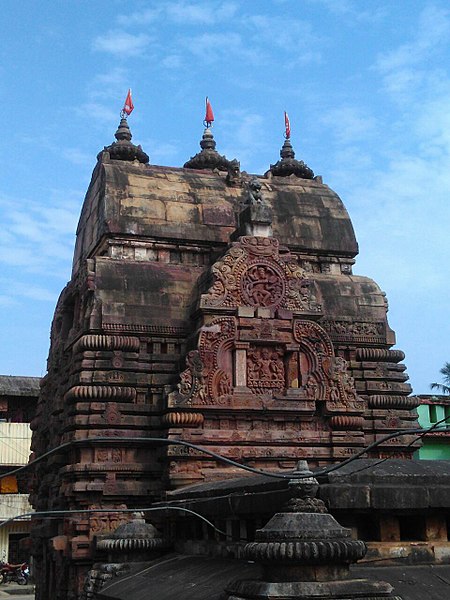
Must Read: All You Need To Know About Badrinath Dham
8. Baitala Temple
Baitala Temple, believed to have been built in the 8th century, is one of the oldest temples in Bhubaneswar. This temple, dedicated to the Hindu goddess Chamunda, stands out for its unique Dravidian architectural style, distinct from the Odisha architectural style seen in other temples. The temple features a pyramidal dome and a hall constructed with a Buddhist architectural approach.
The sculptures and carvings inside the temple depict various Hindu deities, including Lord Shiva and Goddess Parvati. The serene surroundings and well-maintained garden add to the charm of the Baitala Deula, making it a must-visit for history enthusiasts and spiritual seekers.
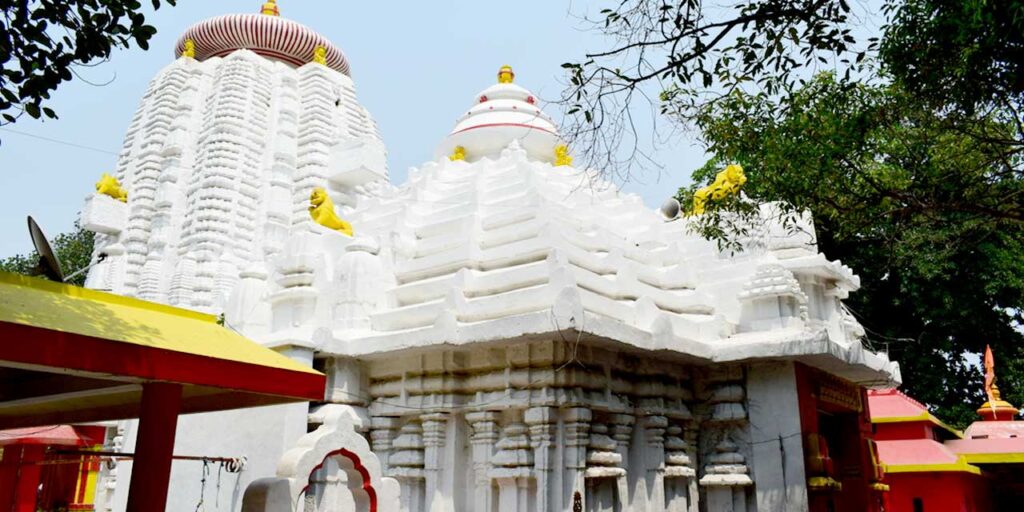
9. Kedar Gouri Temple
One of the eight Astasambhu Temples, Kedareswar Temple is located near Mukteswar Temple in Bhubaneswar. The temple is dedicated to Lord Shiva also known as ‘Kedareshwar’ locally. It is located in the Kedara-Gouri precinct on the right side of the Bhubaneswar-Puri road,40 meters south of Mukteswar Temple.
It is one of 10 monuments that make up the precinct. It’s the complex’s principal temple. The temple faces south, and the deity is a sandstone round yonipitha. The linga in the center has vanished. The sanctuary measures 2.5 square meters and is 0.8 meters below ground level. It is situated near the Mukteswar Temple’s yard.
According to legend, there was a couple named Kedar and Gouri. They fell in love and decided to marry. As the society was opposed to the union, they were forced to flee the village. Gouri became hungry during the trek, so Kedar went in search of food and got killed by a tiger. Later, Gouri, upon hearing this, jumped into a pond at this very place. Knowing this, the then king of Utkal, Lalatendu Keshari, built a temple called Kedareshawr or Kedargouri Temple. Even today, lovers come here to pray for a blissful marriage free of complications.

10. Ram Temple
Ram Mandir is one of the most popular temples in Bhubaneswar. Beautiful images of Lord Rama, his consort Goddess Sita, and his brother Lord Lakhshmana are housed here. Though a late 19th century shrine , its architecture is in the same breath as that of some of the city’s other ancient temples. One of the most notable features of this temple is its large spires, which can be seen from several parts of the city.
Every day, hundreds of devotees visit the temple, and the number grows exponentially on festival days such as Ram Navami and Dussehra.The temple has been built by a private trust that still maintains it. Besides the main deities, idols of other Hindu gods and goddesses such as Lord Shiva and Lord Hanuman are also housed in the temple.

You may like: How to plan your Badrinath Trip-A complete guide
Exploring the Temples of Bhubaneswar: Travel Tips
- Bhubaneswar is well-connected by road, rail, and air. The Biju Patnaik International Airport in Bhubaneswar offers regular flights from major cities in India. The city is also well-connected by trains and has an extensive road network.
- Though there is no dress code for visiting the temples of Bhubaneswar, it is advisable to dress modestly and respectfully.
- Engaging a local guide or joining a guided tour can enhance your temple visit experience, as they provide valuable insights into the history, mythology, and architectural significance of each temple.
- Except for Lingaraja Temple, photography is generally allowed in the temple premises. Some areas may have restrictions on photography, particularly in the inner sanctums.
- As temples are places of worship, it is important to respect local customs and traditions. Maintain a respectful demeanor, refrain from touching sacred artifacts, and follow any instructions given by the temple authorities.
Conclusion
Bhubaneswar, with its magnificent ancient temples, offers a unique blend of spirituality, history, and architectural brilliance. From the grandeur of the Lingaraja Temple to the tranquil ambience of the Ananta Vasudeva Temple, each temple in Bhubaneswar has its own story to tell. Embark on a spiritual journey and immerse yourself in the rich cultural heritage of Odisha as you explore these must-visit temples in Bhubaneswar. Discover the architectural marvels, intricate carvings, and spiritual aura that make these temples an integral part of India’s cultural tapestry. Plan your visit to Bhubaneswar and witness the timeless beauty of these ancient treasures.

